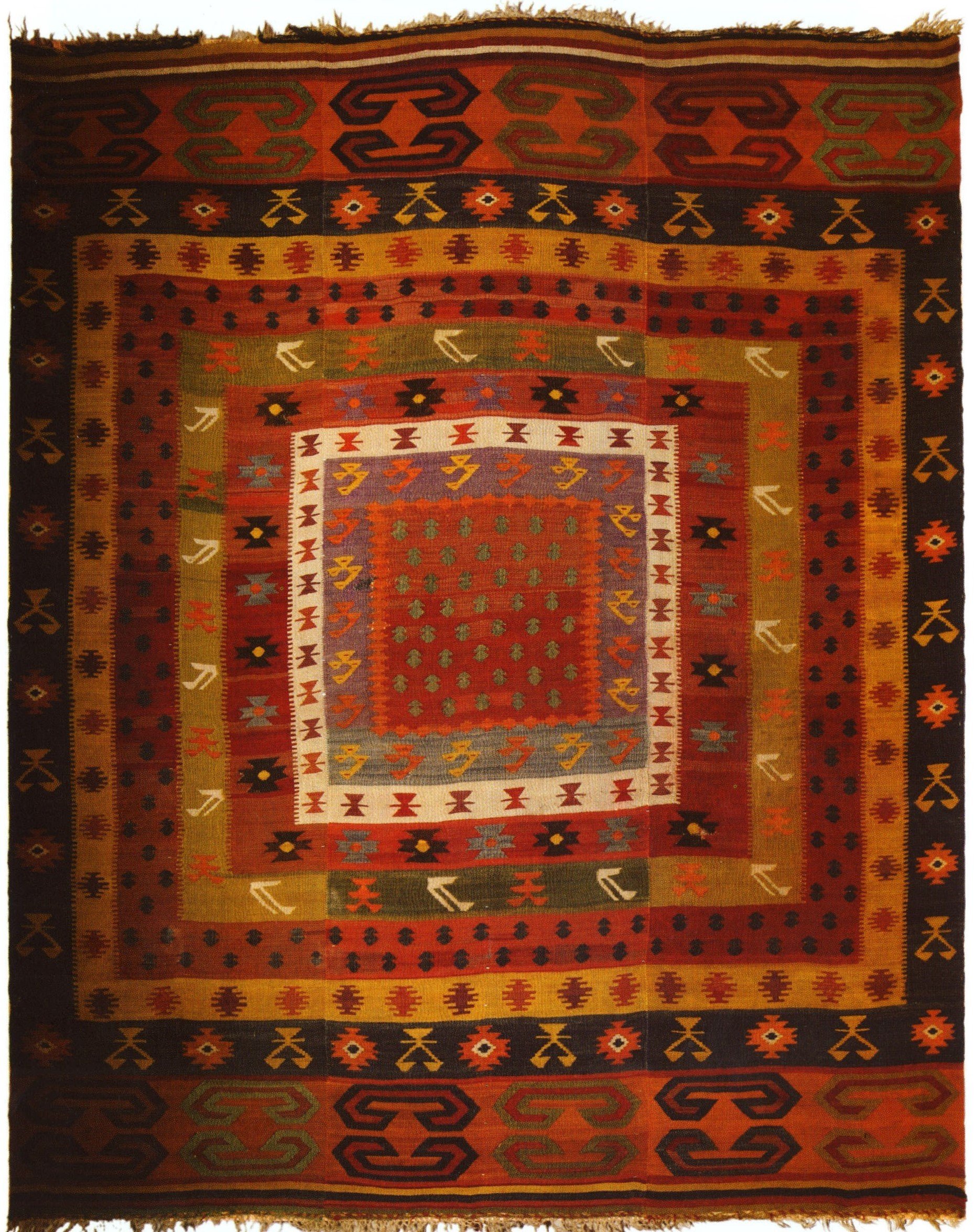
WHAT DOES KILIM MEAN TO US?
Author: Fatima Kadić, PhD, Faculty of Islamic Studies of University of Sarajevo • Photo: Bosnian rug (ćilim)

Recently, at a lecture I gave about Bosnian kilim, I asked students. “What do you associate with the word 'kilim'?” Some of the responses were: tradition, cleanliness, home, grandma, warmth... One response was: neglect.
When we open the entry 'Bosnian kilim' on Wikipedia, we will find, of course incorrect, statement that Bosnia is the only European country “which has its own kilim as a distinctive form of applied, folk tradition of visual expression.” Kilim has also been woven in Serbia, Croatia, Macedonia, Albania, Bulgaria, Romania and Hungary. The flat-woven rug with two faces which we call kilim has also been woven in Italy, Sweden and some other European countries, probably under different names.
Why do we, then, relate our identity to these warm beautiful rugs? Why are we, in our minds and hearts, attached to kilim so that we really feel that we are the only ones who have it and no one else does? It has been an inspiration to writers and poets. In his unique poetic expression, Nedžad Ibrišimović writes: “Take the shoes off when you cross the Korana, the Glina, the Sava and the Drina / wash your feet in the rivers / Bosnia is carpeted with the kilim.” What do we associate with kilim here? With the cleanliness of our Bosnian homes where one does not enter with shoes on. With ablution, and therefore bodily and spiritual purity. Carpeting our homes and not walking on floors in shoes is part of the tradition derived from Islamic ritual regulations on cleanliness. Recently, an acquaintance of mine told me that he asked his eleven-year-old son, quite unprepared for the question: “When you think of your identity, what are the three things that first come to mind?” Kilim was one of them. However, fewer and fewer students say that they have even witnessed its weaving, which is a call to all of us to get organized and take care not to allow these skills to die together with the last weavers well-versed in them.
As far as I am concerned, about fifteen years ago, when I did not even imagine that I would academically be involved in kilims, in University Hospital in Lund, Sweden, where my three-year-old daughter's life was saved after a heart surgery, in the guest book, the two of us together sketched and colored a Bosnian kilim and added appropriate words of thanks. Why did I, in the most crucial and hardest moments of our lives think that Bosnian kilim is what we should present ourselves with and express our gratitude?
The Western world became aware of the beauty of abstract geometric expression of Anatolian kilims (flat, rather than pile-woven) in the 1970s. It was followed by a “boom” in the kilim market. At the time, kilims from many of our houses, and unfortunately from some mosques as well, went to the hands of Turkish dealers who toured Bosnia searching for them, which is still going on. Nowadays, many Anatolian kilims and kilims of other nations, including Bosnian ones, proudly adorn floors and walls of houses in Western Europe and the US, and are again a source of distinctive warmth there as well.
What about neglect?! It is a question which deserves a special attention. Kilims, both court and workshop ones and those made at homes and by nomads, are objects which, at least over fifty years, world museums and literature have been treating as works of art which should be protected and preserved, rather than thrown away or sold from mosques. Is it even necessary to say such a thing?! Older and worn-out kilims should be stored in museums and handed to experts, and newer ones should be used in line with centuries-long custom in Bosnia, spread out one next to the other in mosques, what they were intended for by those who endowed them to God's houses. It is this custom of donating kilims to mosques, which was practices in Turkey as well as here in Bosnia, that was the reason why mosques became the largest storerooms of precious antique kilims and carpet, so important for the history of this segment of Islamic art.
Varoška Rijeka Mosque
